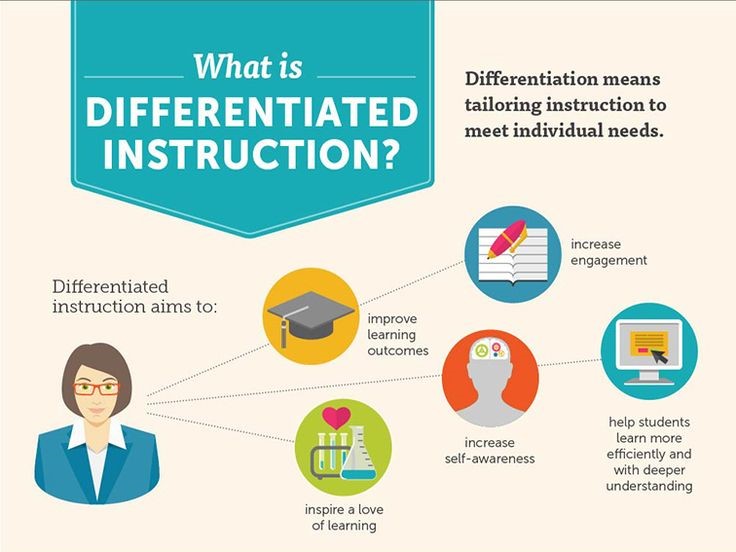Differentiated Instruction
In today’s educational landscape, differentiated instruction has emerged as a powerful approach to meet the diverse learning needs of students. At its core, differentiated instruction recognizes that every student is unique and learns in their own way. By tailoring teaching methods, content, and assessment to individual students, educators can create a more inclusive and effective learning environment. In this article, we will explore the numerous benefits of differentiated instruction and how it can positively impact student achievement.
Enhanced Student Engagement
One of the key advantages of differentiated instruction is its ability to increase student engagement. By personalizing learning experiences, educators can tap into students’ interests, strengths, and preferred learning styles. This customization fosters a sense of ownership and relevance, making the learning process more meaningful and engaging for students. As a result, students become active participants in their own education, leading to improved motivation and a deeper understanding of the subject matter.
Improved Academic Performance
When students are provided with instruction tailored to their specific needs, academic performance naturally improves. Differentiated instruction allows educators to address gaps in students’ knowledge, provide additional support where needed, and challenge advanced learners. By meeting students at their individual skill levels, educators can ensure that all students are appropriately challenged and supported, leading to higher levels of achievement across the board.
Promotion of Inclusivity
Differentiated instruction promotes inclusivity by recognizing and valuing the diverse strengths and abilities of all students. This approach ensures that every student, regardless of their learning style, background, or ability level, has an equal opportunity to succeed. By acknowledging and accommodating individual differences, educators create a classroom environment that celebrates diversity and fosters a sense of belonging. Inclusive classrooms not only benefit students academically but also contribute to the development of empathy, respect, and acceptance.
Development of Critical Thinking Skills
Through differentiated instruction, students are encouraged to think critically and independently. By presenting content and tasks that are appropriately challenging, educators promote higher-order thinking skills, problem-solving abilities, and analytical reasoning. By engaging in activities that require them to apply knowledge in real-world contexts, students develop a deeper understanding of the subject matter and become more adept at analyzing and evaluating information. These critical thinking skills are crucial for success in both academic and professional settings.
Enhanced Classroom Environment
Implementing differentiated instruction creates a positive and inclusive classroom environment that benefits all students. By recognizing and responding to individual needs, educators foster a sense of respect, support, and collaboration. Students feel valued and understood, leading to increased self-confidence, positive attitudes towards learning, and improved relationships with peers and teachers. Additionally, differentiated instruction encourages students to become active learners, promoting a classroom culture that is conducive to growth, exploration, and creativity.
“`mermaid
graph LR
A[Improved Student Engagement] –> B[Enhanced Academic Performance]
A –> C[Promotion of Inclusivity]
A –> D[Development of Critical Thinking Skills]
A –> E[Enhanced Classroom Environment]
“`

FAQs about benefits of differentiated instruction
1. What is differentiated instruction?
Differentiated instruction is an educational approach that involves tailoring teaching methods, content, and assessment to meet the diverse learning needs of students.
2. What are the benefits of differentiated instruction?
Some benefits of differentiated instruction include:
Increased student engagement and motivation
Improved academic performance
Enhanced individualized learning experiences
Greater student self-confidence
Reduced achievement gaps
3. How does differentiated instruction promote student engagement?
By providing students with learning experiences that are tailored to their interests, abilities, and learning styles, differentiated instruction increases student engagement and active participation in the learning process.
4. Can differentiated instruction benefit all students?
Yes, differentiated instruction can benefit all students, regardless of their learning abilities or background. It allows teachers to address the unique needs of each student and provide appropriate support and challenges.
5. Does differentiated instruction improve academic performance?
Research suggests that differentiated instruction can lead to improved academic performance as it allows students to learn at their own pace and provides targeted instruction to address their specific learning needs.
6. How does differentiated instruction enhance individualized learning experiences?
Through differentiated instruction, teachers can customize the learning experience for each student, taking into account their strengths, weaknesses, and interests. This personalization promotes individualized learning experiences.
7. Can differentiated instruction boost student self-confidence?
Yes, differentiated instruction can boost student self-confidence by providing opportunities for success and recognizing individual progress. When students see that their unique abilities and learning styles are valued, they develop a positive attitude towards learning.
8. How does differentiated instruction help reduce achievement gaps?
By addressing the diverse learning needs of students, differentiated instruction helps close achievement gaps. It ensures that all students receive the necessary support and challenges to reach their full potential.
9. Are there any challenges associated with implementing differentiated instruction?
Implementing differentiated instruction can present challenges such as managing diverse classroom needs, designing appropriate assessments, and providing ongoing professional development for teachers. However, the benefits outweigh these challenges.
10. How can teachers implement differentiated instruction in their classrooms?
Teachers can implement differentiated instruction by using strategies such as flexible grouping, offering choice in assignments, using varied instructional materials, providing scaffolding, and regularly assessing student progress to inform instruction.
Differentiated instruction offers a multitude of benefits that contribute to student success and overall educational excellence. By personalizing instruction to meet the unique needs of each student, educators can enhance student engagement, improve academic performance, promote inclusivity, develop critical thinking skills, and create an enriched classroom environment. As educators continue to embrace differentiated instruction, they empower students to reach their full potential and become lifelong learners.




